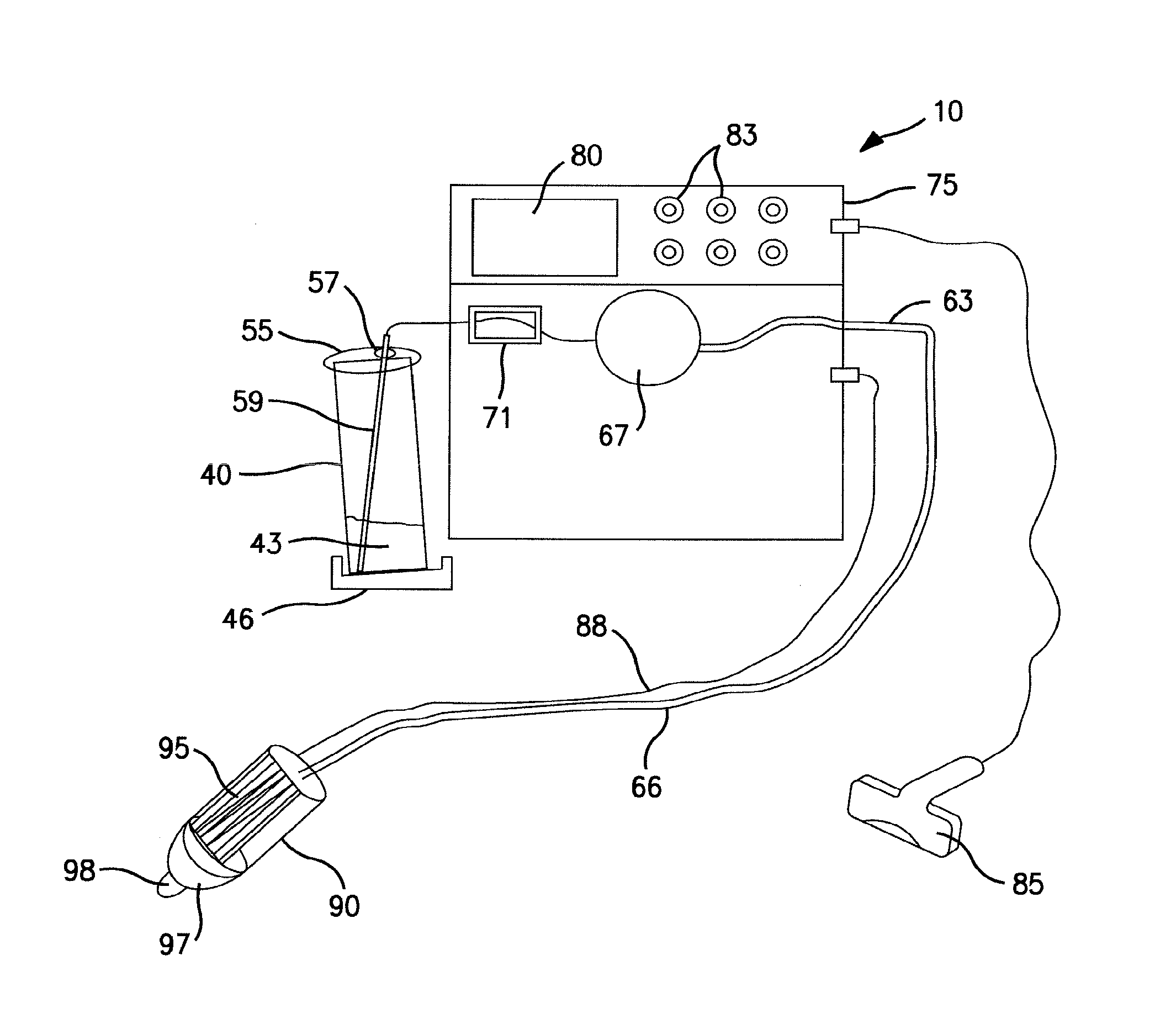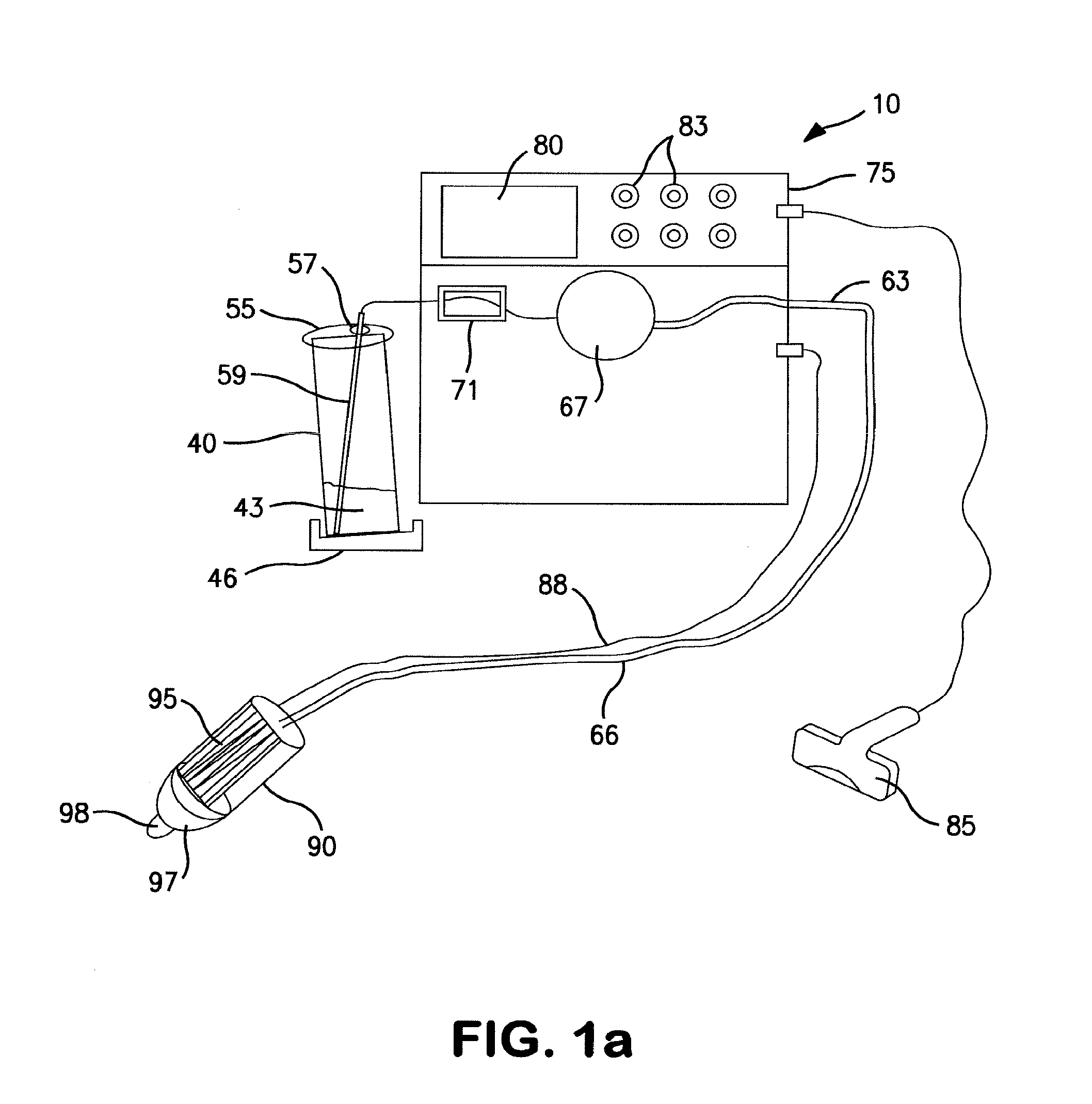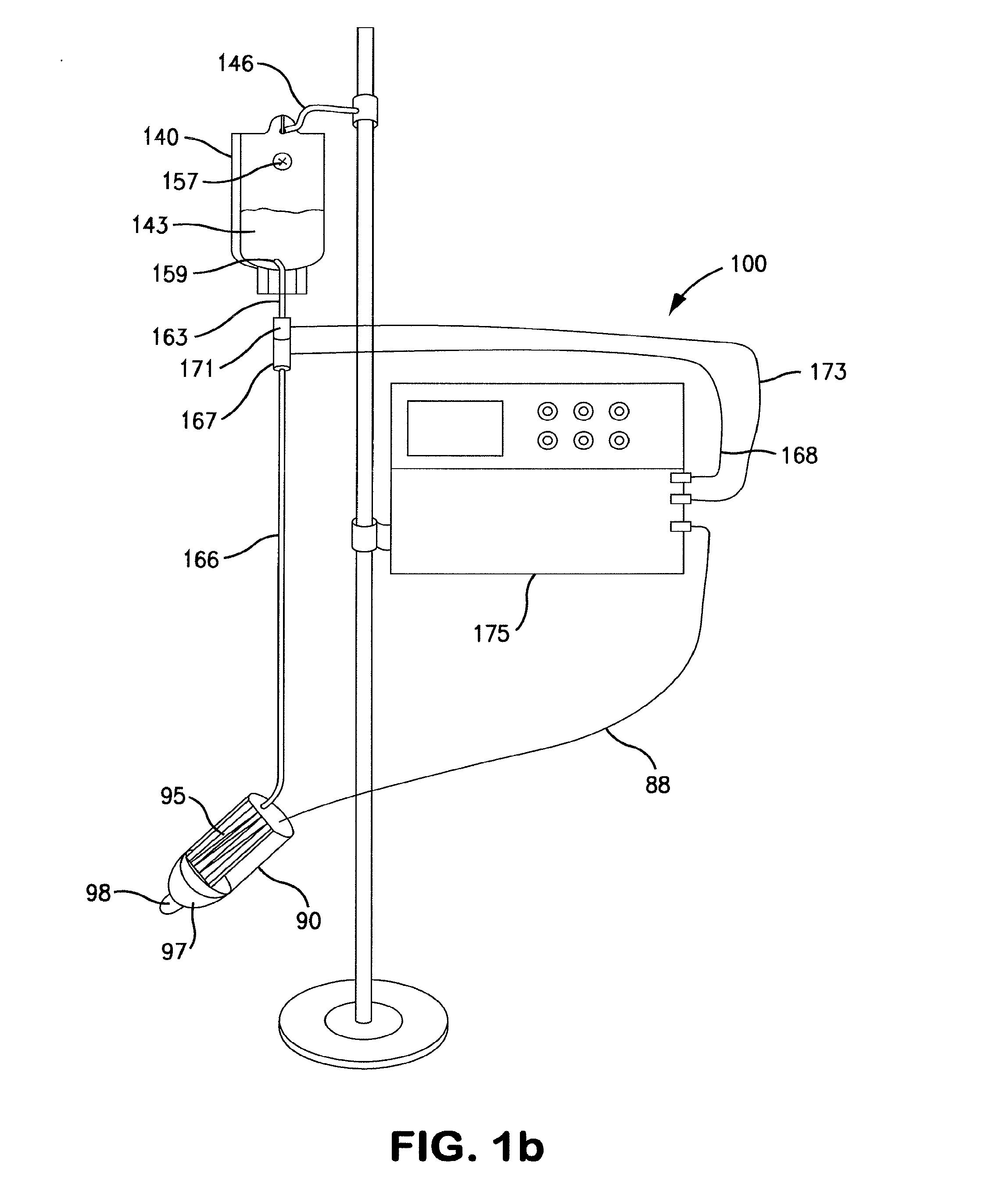Feeding system for infants
a feeding system and infant technology, applied in the field of infant feeding systems, can solve the problems of affecting the development of important neuro-behavioral development, increasing flow rate, and difficulty in learning the neuro-behavioral skills needed to drink from a baby bottle, so as to facilitate the change of the delivery device, monitor the timing and relative strength of sucking behavior, and assess the effect of progress
- Summary
- Abstract
- Description
- Claims
- Application Information
AI Technical Summary
Benefits of technology
Problems solved by technology
Method used
Image
Examples
Embodiment Construction
[0037]Referring now to FIGS. 1-5, embodiments of the present invention will be more thoroughly described.
[0038]FIG. 1a depicts components of a feeding system 10, in accordance with an embodiment of the present invention as it might be configured to rest on a counter, table, or other flat surface. The feeding system 10 for feeding a nutritive fluid to a neonate includes a vessel 40 containing an initial volume of nutritive fluid 43 to be fed to the neonate (not shown). The vessel 40 is positioned in a holder 46 which supports the vessel in such a manner that the bottom surface of the vessel is angled relative to the horizontal plane to allow small amounts of liquid to flow to a predetermined low-end point in the vessel. The vessel may be a container normally provided with nutritive formula or a plastic bottle with expressed breast milk which has been prepared for the feeding. The open top of the container may be covered with cover 55 which has a hole 57 through which a semi-rigid int...
PUM
 Login to View More
Login to View More Abstract
Description
Claims
Application Information
 Login to View More
Login to View More - R&D
- Intellectual Property
- Life Sciences
- Materials
- Tech Scout
- Unparalleled Data Quality
- Higher Quality Content
- 60% Fewer Hallucinations
Browse by: Latest US Patents, China's latest patents, Technical Efficacy Thesaurus, Application Domain, Technology Topic, Popular Technical Reports.
© 2025 PatSnap. All rights reserved.Legal|Privacy policy|Modern Slavery Act Transparency Statement|Sitemap|About US| Contact US: help@patsnap.com



